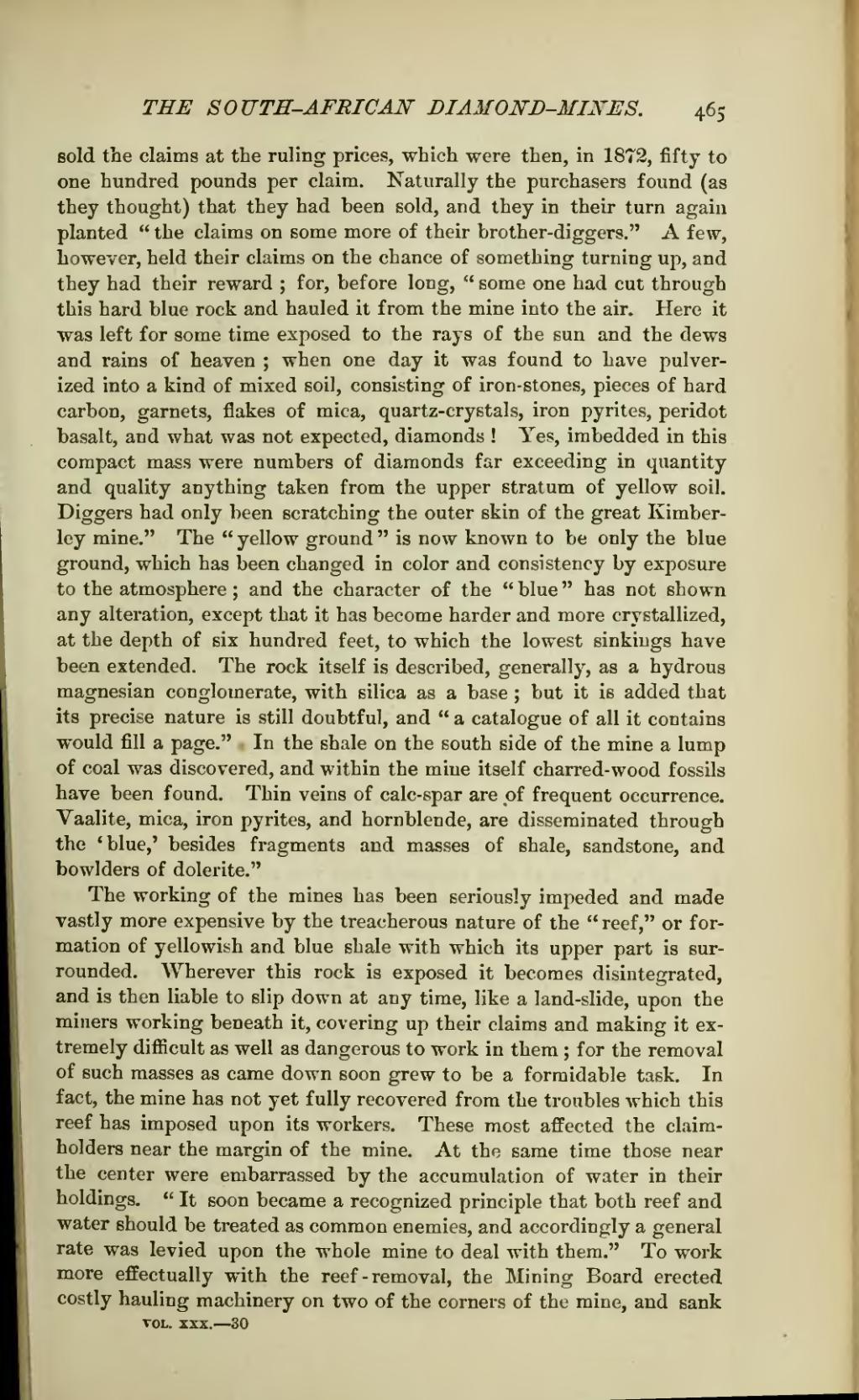sold the claims at the ruling prices, which were then, in 1872, fifty to one hundred pounds per claim. Naturally the purchasers found (as they thought) that they had been sold, and they in their turn again planted "the claims on some more of their brother-diggers," A few, however, held their claims on the chance of something turning up, and they had their reward; for, before long, "some one had cut through this hard blue rock and hauled it from the mine into the air. Here it was left for some time exposed to the rays of the sun and the dews and rains of heaven; when one day it was found to have pulverized into a kind of mixed soil, consisting of iron-stones, pieces of hard carbon, garnets, flakes of mica, quartz-crystals, iron pyrites, peridot basalt, and what was not expected, diamonds! Yes, imbedded in this compact mass were numbers of diamonds far exceeding in quantity and quality anything taken from the upper stratum of yellow soil. Diggers had only been scratching the outer skin of the great Kimberley mine." The "yellow ground" is now known to be only the blue ground, which has been changed in color and consistency by exposure to the atmosphere; and the character of the "blue" has not shown any alteration, except that it has become harder and more crystallized, at the depth of six hundred feet, to which the lowest sinkings have been extended. The rock itself is described, generally, as a hydrous magnesian conglomerate, with silica as a base; but it is added that its precise nature is still doubtful, and "a catalogue of all it contains would fill a page." In the shale on the south side of the mine a lump of coal was discovered, and within the mine itself charred-wood fossils have been found. Thin veins of calc-spar are pf frequent occurrence. Vaalite, mica, iron pyrites, and hornblende, are disseminated through the 'blue,' besides fragments and masses of shale, sandstone, and bowlders of dolerite."
The working of the mines has been seriously impeded and made vastly more expensive by the treacherous nature of the "reef," or formation of yellowish and blue shale with which its upper part is surrounded. Wherever this rock is exposed it becomes disintegrated, and is then liable to slip down at any time, like a land-slide, upon the miners working beneath it, covering up their claims and making it extremely difficult as well as dangerous to work in them; for the removal of such masses as came down soon grew to be a formidable task. In fact, the mine has not yet fully recovered from the troubles which this reef has imposed upon its workers. These most affected the claim-holders near the margin of the mine. At the same time those near the center were embarrassed by the accumulation of water in their holdings. "It soon became a recognized principle that both reef and water should be treated as common enemies, and accordingly a general rate was levied upon the whole mine to deal with them." To work more effectually with the reef-removal, the Mining Board erected costly hauling machinery on two of the corners of the mine, and sank
